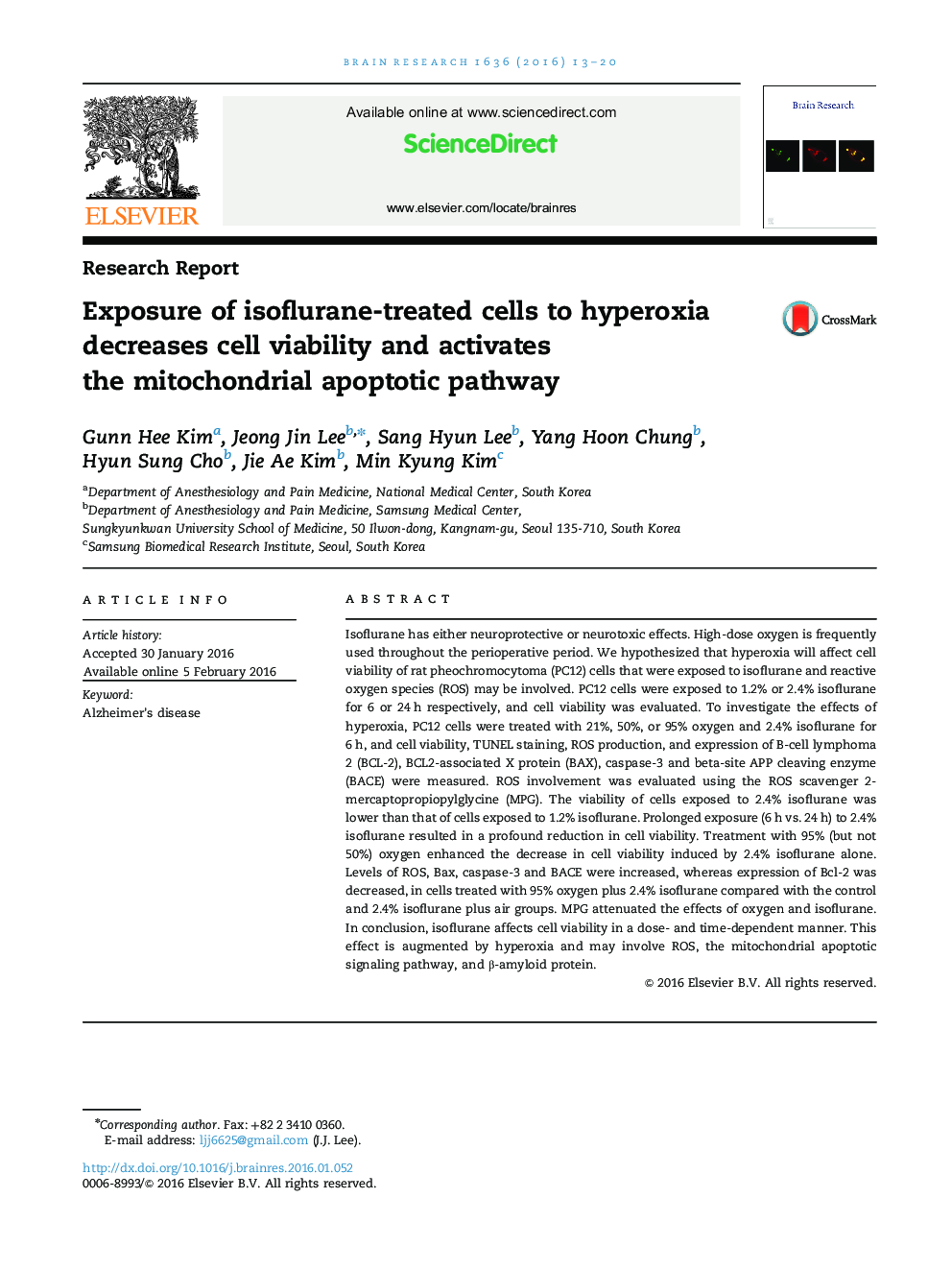| کد مقاله | کد نشریه | سال انتشار | مقاله انگلیسی | نسخه تمام متن |
|---|---|---|---|---|
| 6262561 | 1613804 | 2016 | 8 صفحه PDF | دانلود رایگان |
- The effects of hyperoxia on rat PC12 cells that were exposed to isoflurane.
- Isoflurane decrease cell viability in a dose- and time-dependent manner.
- This effect is augmented by hyperoxia.
- ROS, mitochondrial apoptotic signaling pathway, and β-amyloid may be involved.
Isoflurane has either neuroprotective or neurotoxic effects. High-dose oxygen is frequently used throughout the perioperative period. We hypothesized that hyperoxia will affect cell viability of rat pheochromocytoma (PC12) cells that were exposed to isoflurane and reactive oxygen species (ROS) may be involved. PC12 cells were exposed to 1.2% or 2.4% isoflurane for 6 or 24 h respectively, and cell viability was evaluated. To investigate the effects of hyperoxia, PC12 cells were treated with 21%, 50%, or 95% oxygen and 2.4% isoflurane for 6 h, and cell viability, TUNEL staining, ROS production, and expression of B-cell lymphoma 2 (BCL-2), BCL2-associated X protein (BAX), caspase-3 and beta-site APP cleaving enzyme (BACE) were measured. ROS involvement was evaluated using the ROS scavenger 2-mercaptopropiopylglycine (MPG). The viability of cells exposed to 2.4% isoflurane was lower than that of cells exposed to 1.2% isoflurane. Prolonged exposure (6 h vs. 24 h) to 2.4% isoflurane resulted in a profound reduction in cell viability. Treatment with 95% (but not 50%) oxygen enhanced the decrease in cell viability induced by 2.4% isoflurane alone. Levels of ROS, Bax, caspase-3 and BACE were increased, whereas expression of Bcl-2 was decreased, in cells treated with 95% oxygen plus 2.4% isoflurane compared with the control and 2.4% isoflurane plus air groups. MPG attenuated the effects of oxygen and isoflurane. In conclusion, isoflurane affects cell viability in a dose- and time-dependent manner. This effect is augmented by hyperoxia and may involve ROS, the mitochondrial apoptotic signaling pathway, and β-amyloid protein.
Journal: Brain Research - Volume 1636, 1 April 2016, Pages 13-20
